
Nova Gorica: Slovenia's Vibrant Crossroads of Culture and Nature
Discover Nova Gorica, Slovenia's vibrant city where culture, nature, and entertainment meet. Experience the blend of Slovenian and Italian influences in this unique border town.
Nova Gorica, often referred to as the 'New Gorizia,' is a lively city located on Slovenia's western border with Italy. Known for its unique blend of cultures, Nova Gorica is a fascinating destination where you can experience the best of both Slovenian and Italian influences. The city's history is relatively recent, having been established in 1948, but it boasts a rich tapestry of heritage and modernity. Nature enthusiasts will be thrilled by the city's proximity to the beautiful Soča River Valley, renowned for its emerald waters and outdoor activities like rafting, fishing, and hiking. The surrounding hills offer stunning vistas, perfect for leisurely walks or more challenging treks. Don't miss the chance to visit the nearby Triglav National Park, a haven for nature lovers. Nova Gorica is also a hub for entertainment and leisure. The city's casinos attract visitors seeking excitement, while its theaters, galleries, and music venues offer a rich cultural calendar. For a taste of local life, explore the vibrant markets and try the regional cuisine, which is a delightful mix of Mediterranean and Central European flavors. Make sure to visit the Solkan Bridge, the world's longest stone-arch railway bridge, and take a stroll through the picturesque Goriška Brda wine region, often called the 'Tuscany of Slovenia'.
Local tips in Nova Gorica
- Visit the Solkan Bridge early in the morning for the best light and fewer crowds.
- Explore the Goriška Brda wine region on a bicycle for a leisurely and scenic experience.
- Check the local events calendar for festivals and cultural performances during your stay.
- Try the local dishes like 'frtalja' (an omelette with wild herbs) and pair them with local wines.
- Stay in a local guesthouse or B&B to get a more authentic Slovenian experience.
Nova Gorica: Slovenia's Vibrant Crossroads of Culture and Nature
Nova Gorica, often referred to as the 'New Gorizia,' is a lively city located on Slovenia's western border with Italy. Known for its unique blend of cultures, Nova Gorica is a fascinating destination where you can experience the best of both Slovenian and Italian influences. The city's history is relatively recent, having been established in 1948, but it boasts a rich tapestry of heritage and modernity. Nature enthusiasts will be thrilled by the city's proximity to the beautiful Soča River Valley, renowned for its emerald waters and outdoor activities like rafting, fishing, and hiking. The surrounding hills offer stunning vistas, perfect for leisurely walks or more challenging treks. Don't miss the chance to visit the nearby Triglav National Park, a haven for nature lovers. Nova Gorica is also a hub for entertainment and leisure. The city's casinos attract visitors seeking excitement, while its theaters, galleries, and music venues offer a rich cultural calendar. For a taste of local life, explore the vibrant markets and try the regional cuisine, which is a delightful mix of Mediterranean and Central European flavors. Make sure to visit the Solkan Bridge, the world's longest stone-arch railway bridge, and take a stroll through the picturesque Goriška Brda wine region, often called the 'Tuscany of Slovenia'.
When is the best time to go to Nova Gorica?
Iconic landmarks you can’t miss
Perla, Resort & Entertainment
Experience luxury and excitement at Perla, Resort & Entertainment in Nova Gorica, where relaxation meets vibrant nightlife and exquisite dining.

Soča Fun Park
Discover the thrill of adventure at Soča Fun Park, an outdoor paradise perfect for families and thrill-seekers in Slovenia's stunning natural landscapes.

Park, Hotel & Entertainment
Discover the ultimate entertainment experience at Park, Hotel & Entertainment in Nova Gorica, Slovenia, featuring a casino, restaurants, and live shows.
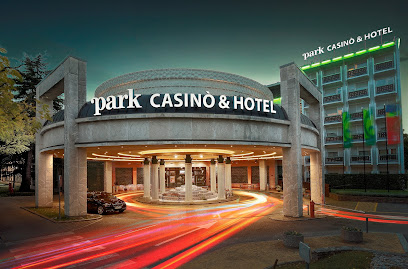
Solkan Bridge
Discover the breathtaking Solkan Bridge, a historic stone marvel offering stunning views and rich cultural heritage in Slovenia's scenic landscapes.

Slovene National Theatre Nova Gorica
Explore the Slovene National Theatre in Nova Gorica for captivating performances and a rich blend of cultural heritage and artistic expression.

Lepa Vida winery
Discover Lepa Vida Winery, a serene escape in Slovenia where exquisite wines and enchanting landscapes await every traveler.
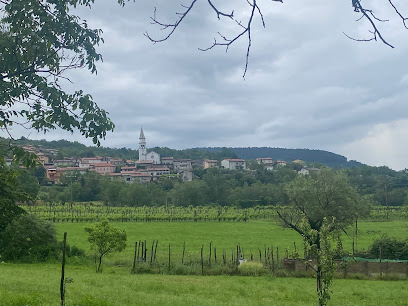
Theme Park of the Great War of Monfalcone
Explore the Theme Park of the Great War in Monfalcone, Italy, a unique open-air museum that vividly portrays the history of World War I through engaging exhibits and authentic recreations.
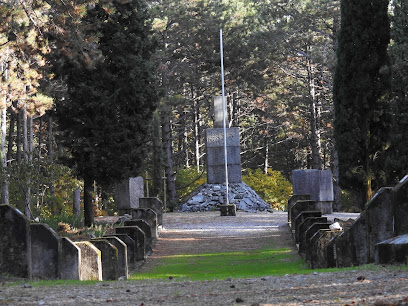
Trg Evrope
Explore Trg Evrope, the cultural heart of Nova Gorica, where vibrant events, charming cafes, and stunning architecture await your discovery.

Goriški muzej Kromberk - Nova Gorica
Discover the captivating history and culture of Nova Gorica at Goriški muzej Kromberk, a must-visit museum in a historic castle.
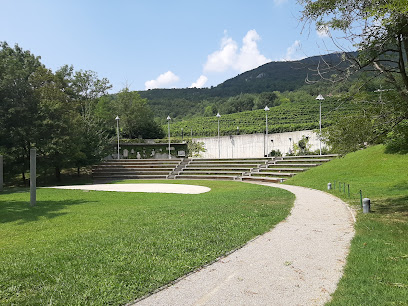
Javni zavod kulturni dom Nova Gorica
Discover the artistic heart of Slovenia at Javni Zavod Kulturni Dom Nova Gorica, a premier venue for performing arts and cultural events.

Pikol
Discover the perfect blend of comfort and elegance at Pikol Hotel in Nova Gorica, Slovenia, where modern amenities meet stunning natural beauty.

DAM boutique hotel & restaurant
Explore culinary excellence at DAM Boutique Hotel & Restaurant in Nova Gorica, where fine dining meets local Slovene flavors in an elegant setting.

Muzej Državna Meja na Goriškem
Explore the fascinating history of border regions at Muzej Državna Meja na Goriškem in Nova Gorica, Slovenia, where cultures meet and stories unfold.

Municipality of Nova Gorica
Discover the rich history and vibrant culture at the City Hall of Nova Gorica, Slovenia's charming administrative center.

Statua di Carlo Michelstaedter
Discover the philosophical legacy of Carlo Michelstaedter at his statue in Gorizia, a serene historical landmark steeped in culture and thought.

Unmissable attractions to see
Unity of Italy Square
Explore the architectural splendor and vibrant atmosphere of Unity of Italy Square, a historical landmark in the heart of Trieste, Italy, steeped in rich culture.

Postojna Cave
Discover the breathtaking Postojna Cave, a stunning natural marvel in Slovenia, renowned for its unique limestone formations and rich biodiversity.

Miramare Castle
Experience the grandeur of Miramare Castle in Trieste, a stunning 19th-century palace with breathtaking sea views and lush gardens.

Predjama Castle
Explore the captivating Predjama Castle, a stunning medieval fortress nestled in a cliff, rich with history and breathtaking views in Slovenia.
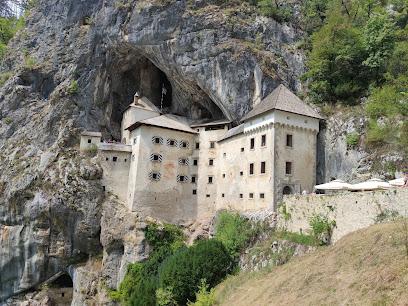
Skocjan Caves
Explore the breathtaking Skocjan Caves, a UNESCO World Heritage Site in Slovenia, famous for its stunning underground rivers and unique geological formations.
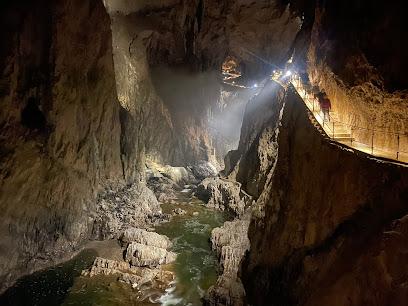
Devil's Bridge
Discover the captivating beauty and rich history of the Devil's Bridge in Cividale del Friuli, a must-see tourist attraction in Italy.

Basilica di Santa Maria Assunta
Explore the stunning mosaics and rich history of the Basilica di Santa Maria Assunta, a UNESCO World Heritage site in Aquileia, Italy.

Udine Castle
Discover the enchanting Udine Castle, a historical gem that offers stunning views and rich cultural insights in the heart of Friuli.

Vogel ski center
Experience the breathtaking beauty and thrilling slopes at Vogel Ski Center, Slovenia's premier winter sports destination overlooking Lake Bohinj.

Duino Castle / Devinski Grad
Explore the historic Duino Castle, a breathtaking blend of architecture, stunning gardens, and scenic views of the Adriatic coast.

Piazza Giacomo Matteotti
Discover the vibrant heart of Udine at Piazza Giacomo Matteotti, where history, culture, and local life converge in a stunning Italian square.
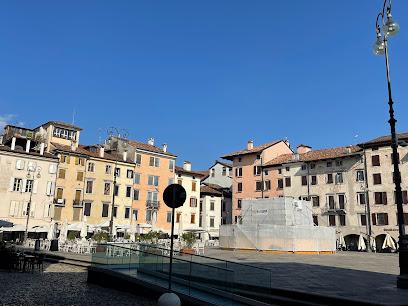
Castello di San Giusto
Explore the rich history and stunning vistas at Castello di San Giusto, a captivating fortress in the heart of Trieste, Italy.

Canal Grande
Experience the captivating beauty and vibrant culture of Canal Grande, the heart of Trieste's waterfront charm.

Waterfall Kozjak
Explore the breathtaking Kozjak Waterfall in Kobarid, a hidden gem surrounded by lush nature and stunning landscapes, perfect for outdoor enthusiasts.

Cattedrale di San Giusto Martire
Experience the breathtaking beauty and rich history of Cattedrale di San Giusto Martire, a must-visit Romanesque cathedral in Trieste, Italy.

Essential places to dine
Perla, Resort & Entertainment
Discover the ultimate entertainment experience at Perla Resort & Entertainment in Nova Gorica – where dining meets fun and relaxation.

Fabrika
Experience Fabrika in Nova Gorica: A delightful fusion of local flavors and international cuisine awaits every visitor.

Ošterija Žogica
Experience authentic Slovenian cuisine at Ošterija Žogica in Solkan - where tradition meets flavor in every dish.

McDonald's Nova Gorica
Experience the convenience of McDonald's in Nova Gorica - fast food favorites await you in Slovenia's vibrant city!

Gostilna pri hrastu
Experience authentic Slovenian cuisine at Gostilna pri hrastu in Nova Gorica – where tradition meets flavor in every dish.

Gostilna in pizzerija Zvezda
Experience authentic Slovenian hospitality at Gostilna in Pizzerija Zvezda with delicious pizzas and local delicacies in charming Solkan.

Gostilnica Mandrija
Experience authentic Slovenian cuisine at Gostilnica Mandrija in Nova Gorica—where every meal tells a story!

Park, Hotel & Entertainment
Discover endless entertainment at Park, Hotel & Entertainment in Nova Gorica - your ultimate destination for dining, relaxation, and fun.

Magma X restavracija Etna
Experience culinary delights at Magma X in Nova Gorica—where great food meets fun activities like bowling and fitness.

Gostilna Pr'Mikiju
Experience authentic Slovenian cuisine at Gostilna Pr'Mikiju in Solkan – where every dish tells a story of tradition and flavor.

Rusa Hiša
Experience authentic Northern Italian cuisine at Rusa Hiša in Nova Gorica - where every dish tells a delicious story.

PizzeriAlexsandro Rožna Dolina
Discover authentic Italian flavors at PizzeriAlexsandro in Nova Gorica - where every pizza is crafted with passion and served with love.

Reservoir Dogs Brewery / Taproom - Byra d.o.o.
Discover unique craft beers and gourmet pizzas at Reservoir Dogs Brewery in Nova Gorica – where flavor meets fun.

Gostilna Kekec
Experience authentic Slovenian cuisine at Gostilna Kekec in Nova Gorica - where tradition meets flavor in every dish.

Restavracija Gurman
Discover the flavors of Slovenia at Restavracija Gurman - where tradition meets innovation in every dish.

Markets, malls and hidden boutiques
Supernova Nova Gorica
Explore Supernova Nova Gorica: A vibrant shopping mall in Slovenia with diverse shops, dining, and entertainment options for an unforgettable experience.

Supernova Mercator Nova Gorica
Explore Supernova Mercator Nova Gorica: A shopping paradise blending local charm with international brands, dining, and entertainment.

OBI Nova Gorica
Discover endless possibilities at OBI Nova Gorica, your ultimate home improvement store for DIY enthusiasts and renovation projects.

Trgovina Hervis Supernova Qlandia Nova Gorica
Discover a wide range of quality sporting goods at Trgovina Hervis Supernova Qlandia in Nova Gorica, your ultimate destination for sports enthusiasts.

Pepco
Explore Pepco in Nova Gorica for stylish clothing, home goods, and toys at unbeatable prices, perfect for families and savvy shoppers.

C&A
Explore C&A in Nova Gorica for trendy, affordable clothing for men, women, and children – where fashion meets sustainability.

Poročni boutique Bella Ušaj Helena s.p.
Explore Bella Boutique in Nova Gorica for a stunning selection of wedding attire and exceptional bridal services tailored to your special day.

Acapulco Gold Nova Gorica
Explore Acapulco Gold Nova Gorica, a unique garden center and cannabis store offering a lush selection of plants and cannabis products in a vibrant atmosphere.

H&M
Discover stylish men's clothing at H&M Nova Gorica, where contemporary fashion meets affordability in a vibrant shopping atmosphere.
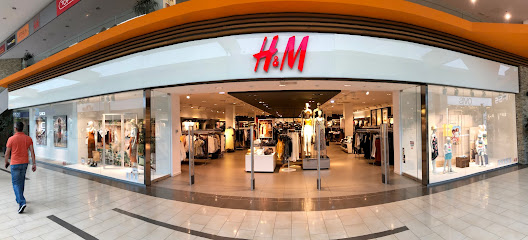
HIŠA DARIL - Nova Gorica Supernova
Explore HIŠA DARIL in Nova Gorica for unique Slovenian gifts and souvenirs that capture the essence of your travels.

HIŠA DARIL - Nova Gorica Qlandia
Explore HIŠA DARIL in Nova Gorica for unique gifts and local crafts reflecting Slovenian heritage.

Obsešen Nova Gorica
Discover contemporary fashion at Obsešen Nova Gorica, where unique styles and quality apparel meet in a chic boutique setting.

Manufaktura
Explore Manufaktura in Nova Gorica, your go-to clothing store for trendy styles and exceptional quality in Slovenia.

SlikaOblika
Explore SlikaOblika in Nova Gorica for unique handcrafted gifts that embody the spirit of Slovenia, perfect for every traveler.

BAGS AND MORE - SUPERNOVA NOVA GORICA
Discover a world of fashion at Bags and More in Nova Gorica, the ultimate destination for trendy clothing and stylish accessories for all ages.

Essential bars & hidden hideouts
Vogal Bar
Discover the charm of Vogal Bar in Nova Gorica, where delightful drinks and a cozy atmosphere await every traveler.

Splendid bar
Discover the vibrant nightlife at Splendid Bar in Nova Gorica, where great drinks and a lively atmosphere await.

Beer Bar Galus
Experience the vibrant atmosphere and diverse beer selection at Beer Bar Galus in Nova Gorica, a favorite among locals and tourists alike.

Bar Plaža Spiaggia
Experience the vibrant nightlife at Bar Plaža Spiaggia, where refreshing drinks and a lively atmosphere await in Nova Gorica.
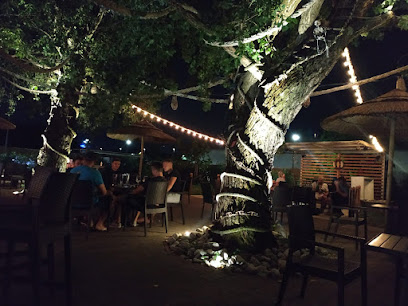
Kings
Discover the vibrant Kings Bar in Nova Gorica, where delightful drinks and a lively atmosphere await you. Perfect for socializing and unwinding.

Caffe Trieste
Experience the heart of Nova Gorica at Caffe Trieste, a charming bar perfect for coffee lovers and social gatherings.

Press bar
Experience the local charm and vibrant atmosphere at Press Bar in Nova Gorica, where great drinks and friendly vibes await every visitor.

Rio Bar- Gostinstvo-Kavčič Aleksander s.p.
Discover the lively ambience of Rio Bar in Nova Gorica, where local culture meets refreshing beverages and friendly faces.

Ambience
Discover the perfect blend of relaxation and socializing at Ambience, the must-visit bar in Nova Gorica, Slovenia.

ASTRO CAFFE
Astro Caffe: A cozy bar in Nova Gorica offering delightful drinks and a vibrant atmosphere for every traveler.
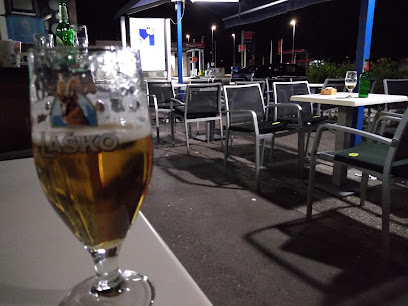
Bar Nikita
Discover Bar Nikita, a vibrant bar in Nova Gorica, where delightful drinks and a lively atmosphere create the perfect social experience.

Strežba pijač Uni bar - Murovec Danijela s.p.
Discover the vibrant nightlife of Nova Gorica at Uni Bar, where great drinks and a friendly atmosphere await you.
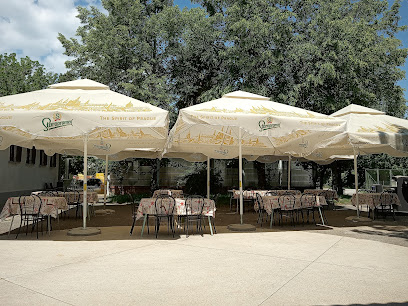
Jolly bar
Discover Jolly Bar in Nova Gorica: A vibrant hub for drinks, socializing, and local culture in the heart of Slovenia.

rabies bar
Discover the vibrant nightlife of Nova Gorica at Rabies Bar, where eclectic drinks and a lively atmosphere await tourists seeking fun and relaxation.

Cocktail Bar
Experience the vibrant nightlife of Nova Gorica at the Cocktail Bar, where innovative cocktails meet a stylish atmosphere in the heart of the city.

Travel experiences inspired by this city
Explore more travel diariesLocal Phrases
-
- HelloZdravo
[Zdrah-voh] - GoodbyeNasvidenje
[Nahs-vee-dehn-yeh] - YesDa
[Dah] - NoNe
[Neh] - Please/You're welcomeProsim
[Proh-seem] - Thank youHvala
[Hvah-lah] - Excuse me/SorryOprosti
[Oh-proh-stee] - How are you?Kako si?
[Kah-koh see?] - Fine. And you?V redu. Ti?
[V reh-doo. Tee?] - Do you speak English?Govoriš angleško?
[Goh-voh-reesh ahn-gleh-shkoh?] - I don't understandNe razumem
[Neh rah-zoo-mehm]
- HelloZdravo
-
- I'd like to see the menu, pleaseRad bi videl jedilnik, prosim
[Raad bee vee-del yeh-deel-neek, proh-seem] - I don't eat meatNe jem mesa
[Neh yehm meh-sah] - Cheers!Na zdravje!
[Nah zdrahv-yeh!] - I would like to pay, pleaseRad bi plačal, prosim
[Raad bee plah-chahl, proh-seem]
- I'd like to see the menu, pleaseRad bi videl jedilnik, prosim
-
- Help!Pomoč!
[Poh-mohch!] - Go away!Pojdi stran!
[Poy-dee strahn!] - Call the Police!Pokliči policijo!
[Poh-klee-chee poh-lee-tsee-yoh!] - Call a doctor!Pokliči zdravnika!
[Poh-klee-chee zdrahv-nee-kah!] - I'm lostIzgubil sem se
[Eez-goo-beel sehm seh] - I'm illBolam
[Boh-lahm]
- Help!Pomoč!
-
- I'd like to buy...Rad bi kupil...
[Raad bee koo-peel...] - I'm just lookingSamo gledam
[Sah-moh gleh-dahm] - How much is it?Koliko stane?
[Koh-lee-koh stah-neh?] - That's too expensiveTo je predrago
[Toh yeh preh-drah-goh] - Can you lower the price?Lahko znižate ceno?
[Lah-koh znee-zah-teh tseh-noh?]
- I'd like to buy...Rad bi kupil...
-
- What time is it?Koliko je ura?
[Koh-lee-koh yeh oo-rah?] - It's one o'clockJe ena ura
[Yeh eh-nah oo-rah] - Half past (10)Pol desetih
[Pohl deh-seh-teeh] - MorningJutro
[Yoo-troh] - AfternoonPopoldne
[Poh-pohl-dneh] - EveningVečer
[Veh-chehr] - YesterdayVčeraj
[Vcheh-rye] - TodayDanes
[Dah-nes] - TomorrowJutri
[Yoo-tree] - 1Ena
[Eh-nah] - 2Dva
[Dvah] - 3Tri
[Tree] - 4Štiri
[Shtee-ree] - 5Pet
[Peh-t] - 6Šest
[Shehst] - 7Sedem
[Seh-dehm] - 8Osem
[Oh-sehm] - 9Devet
[Deh-veht] - 10Deset
[Deh-seht]
- What time is it?Koliko je ura?
-
- Where's a/the...?Kje je...
[Kyeh yeh...] - What's the address?Kakšen je naslov?
[Kahk-shen yeh nahs-lohv?] - Can you show me (on the map)?Mi lahko pokažete (na zemljevidu)?
[Mee lah-koh poh-kah-zheh-teh (nah zehm-lyeh-vee-doo)?] - When's the next (bus)?Kdaj je naslednji (avtobus)?
[Kdyeh yeh nah-slehd-nyee (ow-toh-boos)?] - A ticket (to ....)Vstopnica (za ....)
[Vstohp-nee-tsah (zah ...)]
- Where's a/the...?Kje je...
History of Nova Gorica
-
Nova Gorica, meaning 'New Gorizia,' was established in 1947 after the Paris Peace Treaty, which redrew the borders between Italy and Yugoslavia. The town was created to replace Gorizia, which was ceded to Italy, and to accommodate the Slovene population that found itself on the Yugoslav side of the border.
-
The Paris Peace Treaty of 1947 was a significant turning point for the region. It resulted in the division of the city of Gorizia, with the new border running right through it. This led to the creation of Nova Gorica as a counterpart to the Italian Gorizia, redefining the geopolitical landscape of the area.
-
During the socialist era of Yugoslavia, Nova Gorica became an important economic and cultural hub. Industrial development and the establishment of educational institutions, including the University of Nova Gorica, spurred growth. The town's strategic location near the border also facilitated trade and cross-cultural exchanges.
-
Nova Gorica is renowned for its modernist architecture, a testament to its post-war construction. Prominent architects like Edvard Ravnikar played a crucial role in shaping the city's urban landscape. The design reflects the socialist ideals of the time, emphasizing functionality and communal living spaces.
-
With Slovenia's declaration of independence from Yugoslavia in 1991, Nova Gorica experienced significant transformations. The town benefited from Slovenia's subsequent accession to the European Union in 2004, which enhanced cross-border cooperation and economic opportunities with Gorizia and other neighboring regions.
-
Nova Gorica hosts several cultural festivals that celebrate its rich heritage. The 'Mesto Mladih' or 'City of Youth' festival is a notable event that showcases local music, art, and cuisine. Traditional Slovenian customs are also preserved and celebrated, reflecting the town's deep cultural roots.
-
Religion has played a significant role in the history of Nova Gorica. The town is home to several important religious sites, including the Kostanjevica Monastery, which houses the tombs of the last members of the French royal family, the Bourbons. These sites attract pilgrims and history enthusiasts alike.
-
The Velvet Revolution of the late 1980s and early 1990s had profound effects on Nova Gorica. The peaceful transition from a socialist state to a democratic republic brought about significant political and social changes. The newfound freedom encouraged greater cultural expression and economic reforms.
Nova Gorica Essentials
-
Nova Gorica can be easily accessed by various means of transportation. The nearest international airport is Trieste Airport in Italy, around 35 kilometers away. From there, you can take a taxi, bus, or rent a car to reach Nova Gorica. Alternatively, Ljubljana Jože Pučnik Airport in Slovenia is about 130 kilometers away and offers more flight options. Trains and buses also connect Nova Gorica with major Slovenian cities and neighboring countries, making it a convenient destination for travelers.
-
Once in Nova Gorica, getting around is straightforward. The city has a reliable public transportation system, including buses that cover most areas. Taxis are readily available and can be hailed on the street or booked via phone. Renting a car is also an option, especially if you plan to explore the surrounding regions. For shorter distances, walking or cycling is a pleasant way to navigate the city, given its pedestrian-friendly streets and numerous bike paths.
-
The official currency in Slovenia is the Euro (EUR). Credit and debit cards are widely accepted in hotels, restaurants, and shops. ATMs are plentiful throughout Nova Gorica, ensuring easy access to cash. However, it's a good idea to carry some cash for smaller establishments or market purchases, as they may not accept cards.
-
Nova Gorica is generally a safe city for tourists, with low crime rates. However, as with any travel destination, it is wise to take standard precautions. Avoid leaving valuables unattended and be cautious in crowded places to prevent pickpocketing. There are no specific high-crime areas targeting tourists, but always stay aware of your surroundings, especially at night.
-
In case of emergency, dial 112 for immediate assistance. Nova Gorica has a well-equipped hospital and several clinics for medical emergencies. Pharmacies are also available for minor health issues and over-the-counter medications. It is advisable to have travel insurance that covers medical emergencies. The local police are helpful and can be contacted at the emergency number for assistance with safety concerns.
-
Fashion: Do dress comfortably and appropriately for the weather. While there is no strict dress code, avoid overly revealing clothing, especially when visiting religious sites. Religion: Do be respectful of local customs and traditions. When entering a church, it is polite to be quiet and dress modestly. Public Transport: Do be courteous and offer your seat to elderly passengers. Don’t eat or drink on public transport. Greetings: Do greet people with a handshake or a nod. A friendly 'Dober dan' (Good day) is appreciated. Eating & Drinking: Do try local cuisine and accept food and drink offerings graciously. Don’t refuse hospitality, as it is considered impolite.
-
To experience Nova Gorica like a local, visit the local markets and try fresh produce and traditional Slovenian goods. Engage with locals, who are often friendly and willing to share insights about the city's history and culture. Don’t miss the opportunity to explore the beautiful Solkan Bridge, the longest stone-arch bridge in the world. For a unique experience, visit the nearby Gorizia Castle just across the Italian border, or take a leisurely walk along the emerald green Soča River.
Trending Landmark in Nova Gorica
-
Perla, Resort & Entertainment
-
Soča Fun Park
-
Park, Hotel & Entertainment
-
Solkan Bridge
-
Slovene National Theatre Nova Gorica
-
Lepa Vida winery
-
Theme Park of the Great War of Monfalcone
-
Trg Evrope
-
Goriški muzej Kromberk - Nova Gorica
-
Javni zavod kulturni dom Nova Gorica
-
Pikol
-
DAM boutique hotel & restaurant
-
Muzej Državna Meja na Goriškem
-
Municipality of Nova Gorica
-
Statua di Carlo Michelstaedter
Nearby Cities to Nova Gorica
-
Things To Do in Sežana
-
Things To Do in Trieste
-
Things To Do in Bohinj
-
Things To Do in Koper
-
Things To Do in Izola
-
Things To Do in Piran
-
Things To Do in Postojna
-
Things To Do in Portorož
-
Things To Do in Škofja Loka
-
Things To Do in Bled
-
Things To Do in Kranjska Gora
-
Things To Do in Ljubljana
-
Things To Do in Kamnik
-
Things To Do in Opatija
-
Things To Do in Klagenfurt















